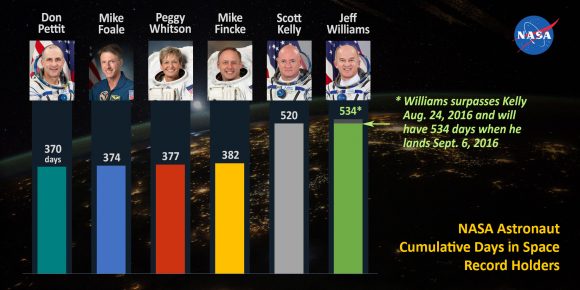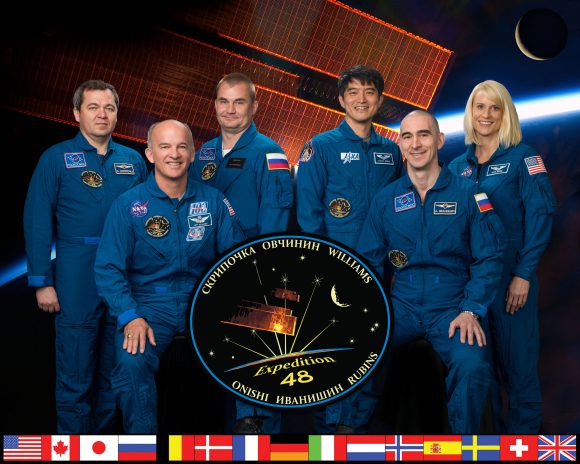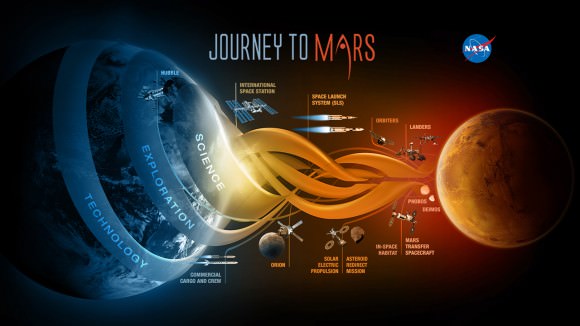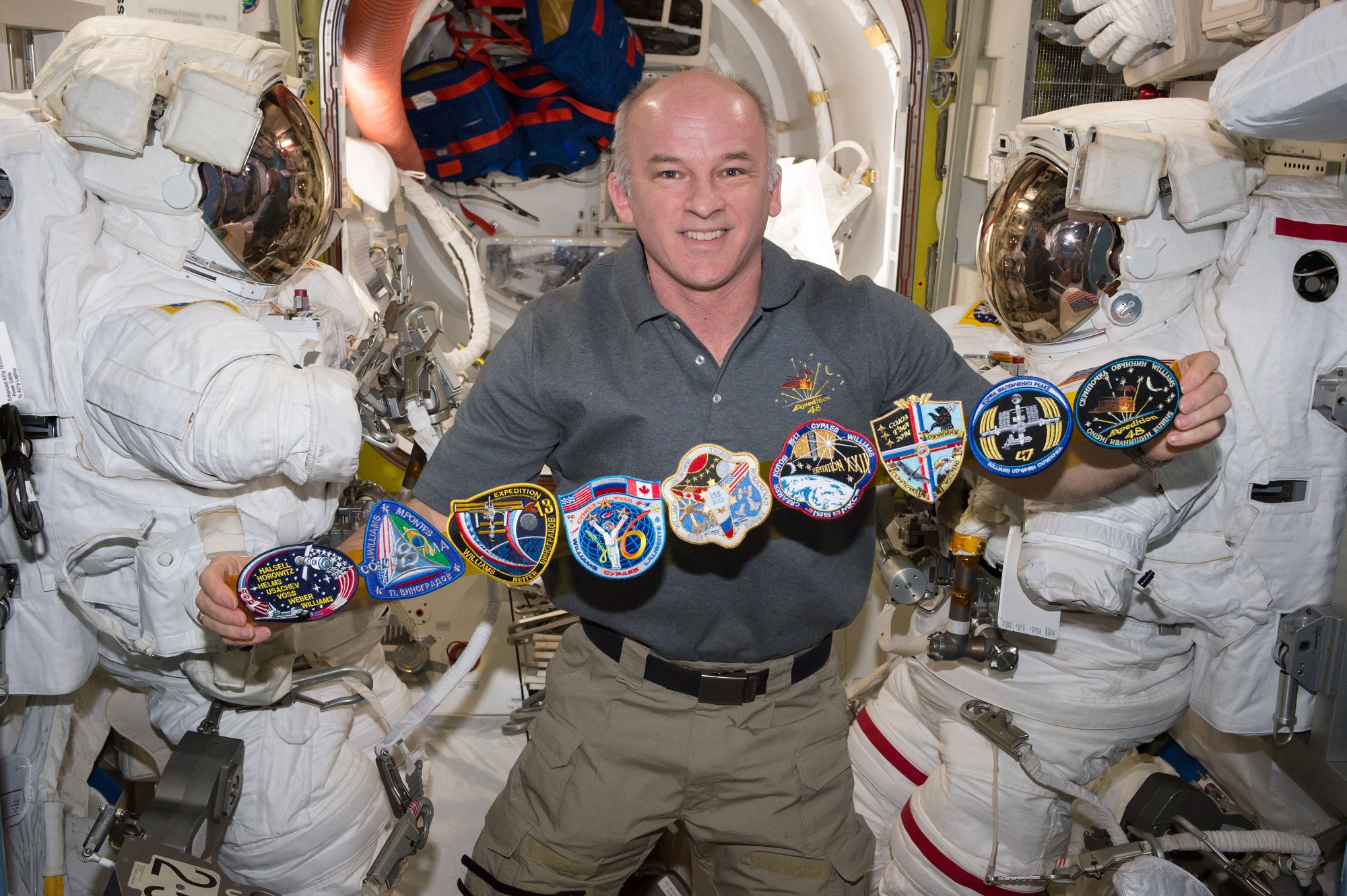The International Space Station has provided astronauts and space agencies with immense opportunities for research during the decade and a half that it has been in operation. In addition to studies involving meteorology, space weather, materials science, and medicine, missions aboard the ISS has also provided us with valuable insight into human biology.
For example, studies conducted aboard the ISS’ have provided us with information about the effects of long-term exposure to microgravity. And all the time, astronauts are pushing the limits of how long someone can healthily remain living under such conditions. One such astronauts is Jeff Williams, the Expedition 48 commander who recently established a new record for most time spent in space.
This record-breaking feat began back in 2000, when Williams spent 10 days aboard the Space Shuttle Atlantis for mission STS-101. At the time, the International Space Station was still under construction, and as the mission’s flight engineer and spacewalker, Williams helped prepare the station for its first crew.

This was followed up in 2006, where Williams’ served as part of Expedition 13 to the ISS. The station had grown significantly at this point with the addition of Russian Zvezda service module, the U.S. Destiny laboratory, and the Quest airlock. Numerous science experiments were also being conducted at this time, which included studies into capillary flow and the effects of microgravity on astronauts’ central nervous systems.
During the six months he was aboard the station, Williams was able to get in two more spacewalks, set up additional experiments on the station’s exterior, and replaced equipment. Three years later, he would return to the station as part of Expedition 21, then served as the commander of Expedition 22, staying aboard the station for over a year (May 27th, 2009 to March 18th, 2010).
By the time Expedition 48’s Soyuz capsule launched to rendezvous with the ISS on July 7th, 2016, Williams had already spent more than 362 days in space. By the time he returns to Earth on Sept. 6th, he will have spent a cumulative total of 534 days in space. He will have also surpassed the previous record set by Scott Kelly, who spent 520 days in space over the course of four missions.

Expedition 48 crew portrait with 46S crew (Jeff Williams, Oleg Skripochka, Aleksei Ovchinin) and 47S crew (Anatoli Ivanishin, Kate Rubins, Takuya Onishi). Credit: NASA
On Wednesday, August 24th, the International Space Station raised its orbit ahead of Williams’ departure. Once he and two of his mission colleagues – Oleg Skripochka and Alexey Ovchinin – undock in their Soyuz TMA-20M spacecraft, they begin their descent towards Kazakhstan, arriving on Earth roughly three and a half hours later.
Former astronaut Scott Kelly was a good sport about the passing of this record, congratulating Williams in a video created by the Johnson Space Center (see below). Luckily, Kelly still holds the record for the longest single spaceflight by a NASA astronaut – which lasted a stunning 340 days.
And Williams may not hold the record for long, as astronaut Peggy Whitson is scheduled to surpass him in 2017 during her next mission (which launches this coming November). And as we push farther out into space in the coming years, mounting missions to NEOs and Mars, this record is likely to be broken again and again.

In the meantime, Williams and his crew will continue to dedicate their time to a number of crucial experiments. In the course of this mission, they have conducted research into human heart function, plant growth in microgravity, and executed a variety of student-designed experiments.
Like all research conducted aboard the ISS, the results of this research will be used to improve health treatments, have numerous industrial applications here on Earth, and will help NASA plan mission farther into space. Not the least of which will be NASA’s proposed (and rapidly approaching) crewed mission to Mars.
In addition to spending several months in zero-g for the sake of the voyage, NASA will need to know how their astronauts will fair when conducting research on the surface of Mars, where the gravity is roughly 37% that of Earth (0.376 g to be exact).
And be sure to enjoy this video of Scott Kelly congratulating Williams on his accomplishment, courtesy of the Johnson Space Center:
Further Reading: NASA

